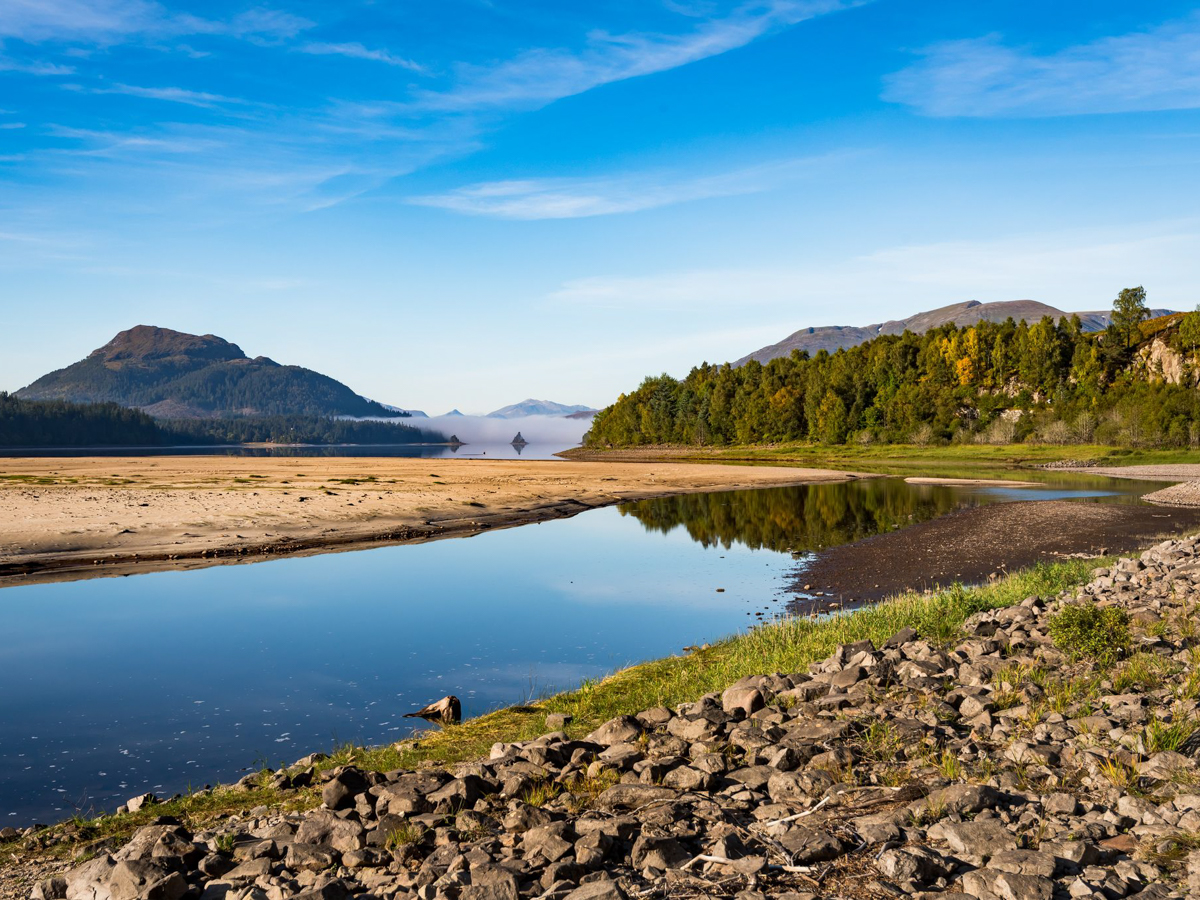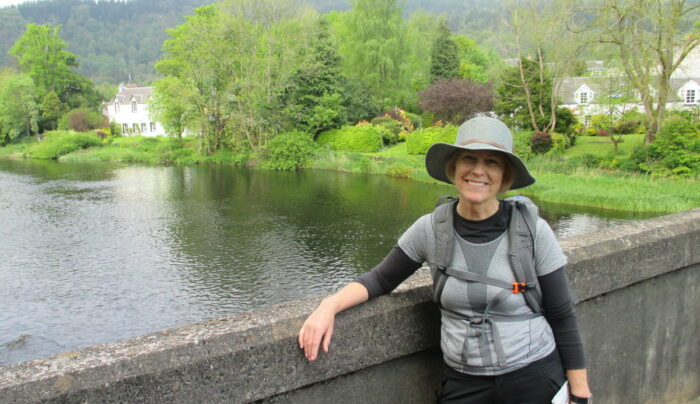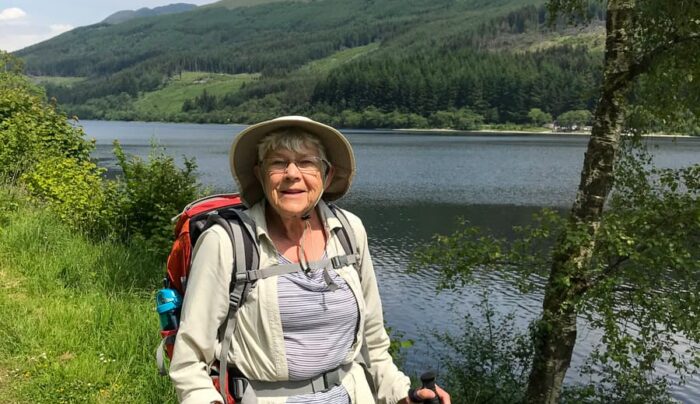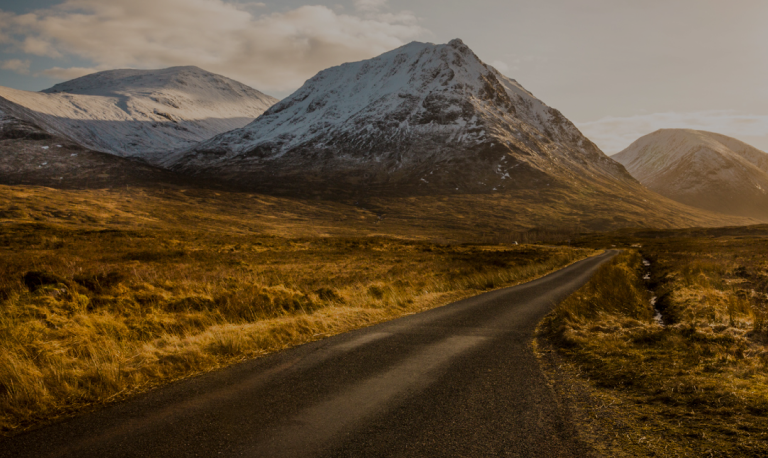Hiking the Path Less Travelled on the East Highland Way
Starting in Fort William and ending in Aviemore, the East Highland Way traverses 82 miles through enchanting forests, mountainous landscapes, and unspoilt wilderness.
By connecting the Western Coast to the rugged Cairngorms National Park in the East of Scotland, the routes distinctive character lies in the contrasting and continuously changing scenery.
Here are just a few reasons to walk one of Scotland’s quieter long-distance trails …
A Walk Loaded With History
While the trail itself was only recently devised in 2010 by Kevin Langan, the route passes through spots infused with historic significance. Straight after leaving Fort William while walking in the shadow of the Aonachs to Spean Bridge, the trail passes the iconic Commando memorial.
The memorial was dedicated to the men of the original British Commando Forces raised during World War II and was unveiled by the Queen Mother in 1952.

From here, it’s also possible to take a short detour and visit the remains of the Highbridge – the site of the first action of the Jacobite Rising in 1745. This monumental episode in Scottish history continues to influence Highland culture and politics to this day.
Further along the trail, near Kingussie, the Ruthven Barracks dominated the head of the Spey Valley until their destruction by the Jacobite soldiers after defeat at Culloden battlefield. The barracks were built in 1719 after the first Jacobite rising in 1715. Their remains are ‘a forcible reminder of the Hanoverian efforts to quash the Jacobites and disaffected Highlanders’.

The Path Less Travelled
The East Highland Way offers peace and tranquillity as walkers find themselves practically alone in remote and dramatic mountain ranges. Passing Ben Nevis, the Creag Meagaidh group and the mighty Cairngorms in solitude, walkers can discover the trail’s hidden gems without interruption or hurry.
The flawless beaches on the shore of Laggan, the tumbling water of Monessie Gorge and the provocative art of the Frank Bruce Sculpture Trail, are distinctive and unspoilt features of this rugged trail.

While the sight of other walkers or tourists is unlikely, the Scottish Highlands certainly isn’t lacking in hospitality.
Accommodations such as Distant Hills Guest House and The Rumblie Guest House, are more than simply wonderful places to stay – they offer local knowledge, charming settings, and scrumptious and traditional Scottish breakfasts (often made with secret recipes!).

The Challenge
‘There are no shortcuts to any place worth going’
The most rewarding walks are those which cannot be completed by simply rolling out of bed and strolling along a road. The East Highland Way is a walk which requires getting your feet wet, checking your compass, and a willingness to take the first step off the grid.
The trail is sparsely way-marked and includes pathless sections and boggy river crossings. The challenging nature of the East Highland Way makes the finish in Aviemore all the more rewarding.

At Absolute Escapes we offer four different itineraries to walk the East Highland Way, so you can choose just how challenging you would like your adventure to be! In locations that lack accommodation, we also organise transfers so that you can focus on relaxation over logistics.
From rich contrasting and dramatic scenery to Highland hospitality, this diverse trail offers a tantalising taste of everything the Scottish Highlands have to offer. The East Highland Way offers walkers a unique combination of history, challenge, hospitality and pristine surroundings.
It’s also perfectly located to continue onto the West Highland Way, or onwards to the Speyside Way.

Walking Holidays in the Scottish Highlands












- Experience fabulous views of Scotland's highest mountains including Ben Nevis and the mighty Cairngorms
- Discover the abundant wildlife, flora and fauna of the Scottish Highlands
- Enjoy enchanting forests, peaceful mountain wilderness and lochside trails









- Experience one of the world's most famous long-distance walks
- Enjoy breathtaking scenery from Loch Lomond into the heart of the Scottish Highlands
- Relish the wonderful international camaraderie of your fellow walkers









- Experience one of Scotland's most famous long-distance walks
- Explore mysterious Loch Ness and enjoy a cruise on the loch
- Hike through deep glens, ancient forests and dramatic mountains











- Follow in the footsteps of legendary Scottish folk hero Rob Roy MacGregor
- Walk through beautiful forests and alongside some of Scotland's finest lochs, rivers and waterfalls
- Discover the well-worn track used during the dramatic Jacobite uprisings and clan feuds










- Sample whisky at some of Scotland's finest distilleries, such as Glenlivet and Glenfiddich
- Walk through the magnificent Cairngorms - Britain's largest National Park
- Visit Ballindalloch Castle, one of the most romantic castles in Scotland


